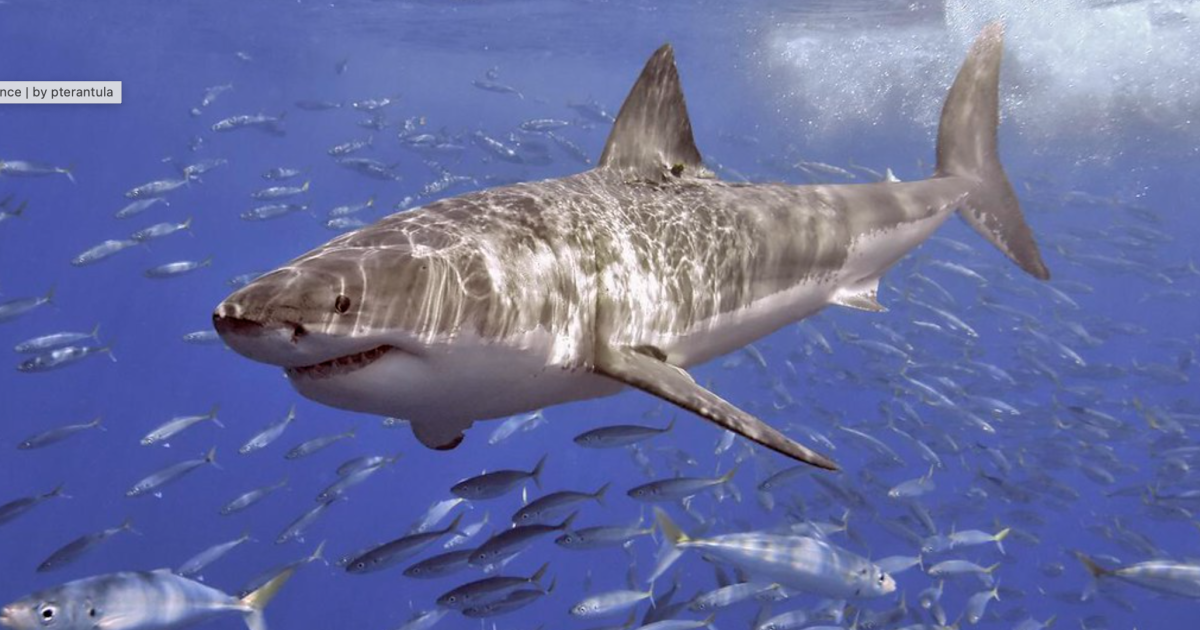While you’re more likely to win the lottery, or be bitten by another person, than become a tasty snack for a great white, shark attacks live rent-free in the human psyche, alongside quicksand, nuclear war and aliens. However, reports of shark attacks have been on the rise for decades, and scientists are yet to pinpoint exactly why.
Next year marks the half-century anniversary of the release of the movie Jaws, which certainly can take some of the credit/blame for our exaggerated fear of shark attacks and for turning these oversized fish into ocean enemy number one. However, so far in 2024 there have been 28 shark attacks worldwide, with more than half in US waters. This follows on from 69 in 2023, up on the five-year average of 63. Last year also saw a big increase in fatalities, with 14 shark-related deaths and 10 of these through “unprovoked” events, nearly double the five-year average of six.
Several bloody run-ins with beachgoers over the 2024 July 4 holiday weekend has once again put these much maligned marine predators in the spotlight. (It’s worth remembering that shark bites are disproportionately represented in the headlines, so it’s a good chance to assess your risk compared to other hazards such as lightning strikes, hunting, dog attacks and … being bitten by a human in New York.)
“This pattern isn’t due to increased aggression from white sharks, but rather a combination of more of people being in the ocean each year and a stronger emphasis placed on reporting bites and fatalities,” noted a statement from the University of Florida’s International Shark Attack File (IASF).
But the interactions biologists are most interested in are what’s known as “unprovoked bites.” These occur much like how they sound – when a shark has bitten someone in the water without any evidence of the human provoking the animal.
“We’re biologists, and we want to understand the natural behavior of the animals – not the unnatural behavior,” said Gavin Naylor, director of the Florida Museum of Natural History’s shark research program.
These ‘attacks’ take several forms, such as when a shark in murky water or strong currents mistakes the movement of a human for food and biting, before quickly letting go and swimming off (“hit-and-run bites”), or when the shark bumps into a swimmer or wader with its head and then bites (“bump-and-bites”). Provoked bites, on the other hand, generally occur when the human has instigated contact, be it through trying to feed sharks or touch one while diving, or while unhooking or removing a shark from a line or net.
While unprovoked attacks are considered “test” bites, unfortunately if it’s delivered by a sizeable species such as a great white or tiger shark, this single accident can be fatal.
“If a white shark is going after a seal and the seal knows it, the white shark hasn’t got a chance,” said Gavin Naylor, director of the Florida Museum of Natural History’s shark research program. “Seals are really agile, so the only ones that get caught are the ones that are goofing off and flopping around on the surface minding their own business. And that’s kind of what a surfer looks like.”
Of the 548 known shark species in the world, only 13 have been confirmed to have bitten humans 10 times or more. And the top three – great white (Carcharodon carcharias), bull (Carcharhinus leucas) and tiger (Galeocerdo cuvier) – account for most incidents. So while the vast majority of sharks pose next to no risk to us, what is making humans increasingly vulnerable in the water?
A 2022 study pointed out that, while there’s a lot of debate about the root cause of a rise in shark bites, scientists believe it’s a culmination of human and environmental factors. Increased population, particularly along coastlines, and with it more time being spent on water-based activities like surfing and diving, looks to be a key component.
According to Joe Miguez, a doctoral student in the Florida Program for Shark Research, this makes it a numbers game – more people spending time in shark habitats is going to lead to more encounters with the residents. On the flip side, conservation efforts has seen many shark populations recover (although 35.9% of all species are still recognized as at threat of extinction).
Scientists believe there are environmental factors at play too. Changing water temperatures, decreased water clarity and climate change may impact why waters around some areas, such as Florida and New York, may become hot spots for shark bites.
“The low and sporadic number of bite incidents and complexity of factors influencing shark-bite risk underline the challenges of understanding their drivers and what might cause sharks to bite humans,” noted Australian scientists in the 2022 Nature paper.
Adding to this is the difficulty in monitoring shark populations and tracking behavior; even emerging drone technologies are limited due to environmental conditions.
Shark researchers have urged people to look at shark bites less like a common threat but more as a series of risk factors that can be mitigated. Swim with friends, since sharks are more likely to approach a solitary target, don’t take shiny jewelry into the ocean, try to avoid swimming at common hunting times of dusk and dawn, and steer clear of areas between sandbars or where the beach sharply drops off into deeper waters.
An underwater trench, transporting deep-sea fish closer to shore, is thought to have been behind a fatal 2023 attack in the Red Sea, Egypt.
“You see pelagic fishes like oceanic white tip sharks only 700 feet (213 m) off the beach, when usually you have to go 20 miles (32 km) out to find that species,” Naylor said. “These pelagic animals are used to living in a food desert, so when they come across anything they’ll give it a try. The Red Sea’s geomorphology brings very large, pelagic predatory fishes into juxtaposition with tourists that are diving and enjoying their holiday.”
“The bite in Egypt stood out because a video shows a tiger shark taking multiple passes at a human in the water,” Miguez said. “Even though predation events are exceedingly rare, it’s pretty clear that’s what it was.”
The scientists suggest other avoidance strategies too: Don’t wear high-contrast or brightly colored clothing, and try not to splash excessively in the one spot, as sharks detect these low-frequency sounds from as many as several miles away and can be drawn to them, mistaking them as potential prey in distress.
However, sharks are not capable of smelling a drop of blood from a great distance, nor is there any evidence that they’re attracted by human blood. Their sense of smell is actually on par with most fish. A 2007 study demonstrated that while they can detect scent molecules at a ratio of one part per 10 billion parts water, that’s roughly a drop of blood in an Olympic-sized swimming pool, and it involves far more complex environmental and physiological mechanisms. Another study uncovered that scent detection had more to do with timing than concentration, while additional research found that sharks, once drawn through smell, will be guided more by movement of potential prey in the water, rather than scent.
Nearly half of shark bites have targeted surfers (42%), where there’s also a higher proportion of fatalities. On June 23, Pirates of the Caribbean actor and professional surfer Tamayo Perry died after a rare shark attack near Moku’auia (Goat Island) in Oahu, Hawaii, around 100 yards (90 m) from the shore.
“If you go to remote regions where beach safety isn’t in place, there is a higher risk of a fatal shark attack,” said Miguez. “This is because when an attack happens and there is beach safety, you can get a tourniquet on sooner and save the person’s life. So, the solution isn’t to not surf. It’s to surf in areas where there’s a good beach safety program in place.”
It’s also worth remembering that humans kill as many as 100 million sharks each year, and controversial culling programs have seen other marine life – including sea turtles and dolphins – get caught in nets and on hooks, resulting in injury and death.
Sources: The International Shark Attack File, Australian Shark Incident Database







